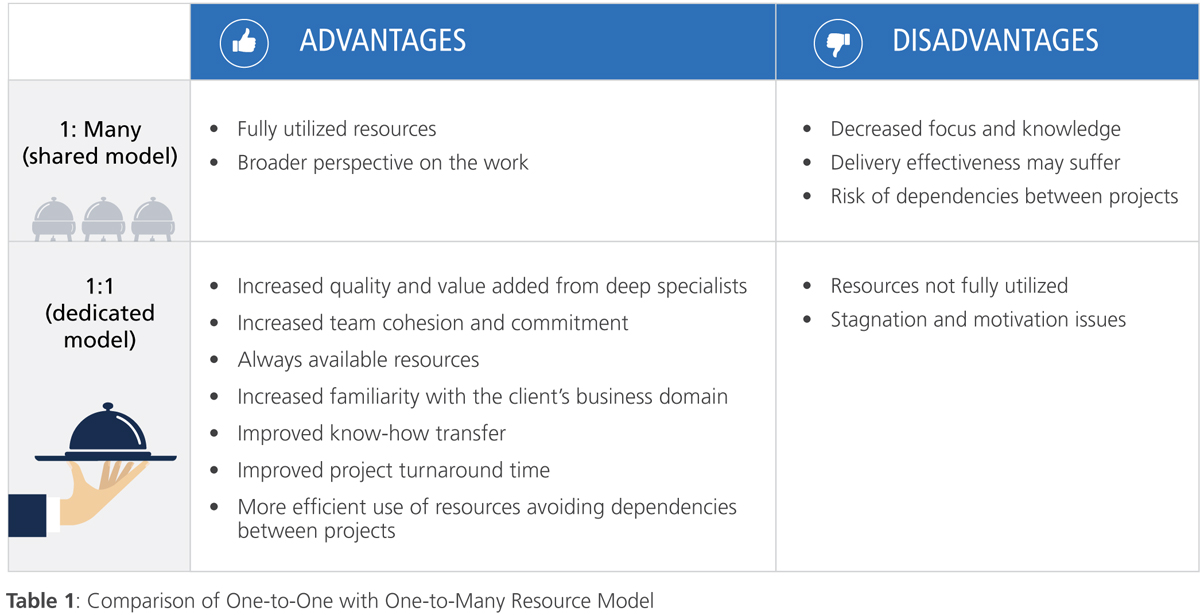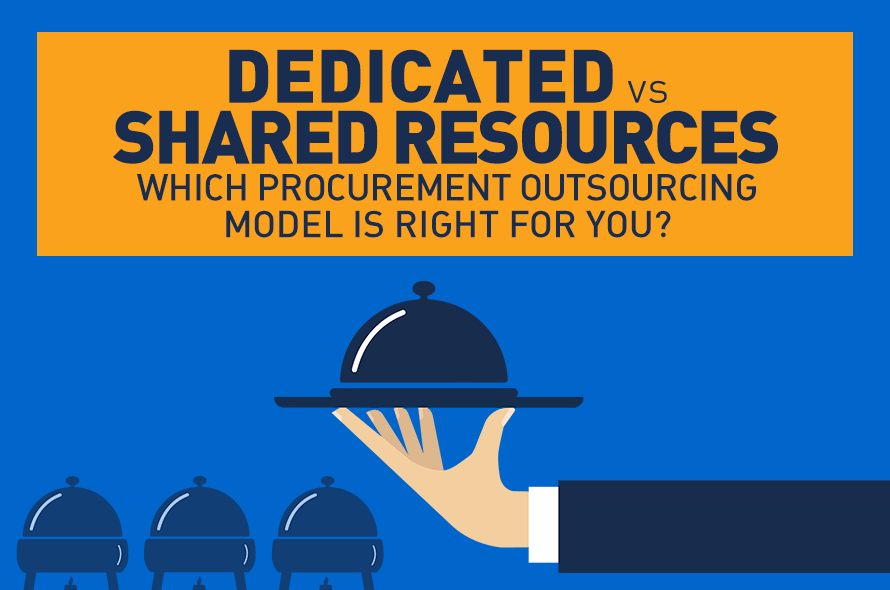Introduction
The key question for enterprises looking to outsource their procurement operations is, with whom do we partner? Usually, the answer is a specialist provider with deep procurement expertise, or a multi-tower provider with cross-vertical capabilities.
There are several compelling business reasons for choosing a best-of-breed specialist provider over a multi-tower firm (Also read, Procurement Outsourcing: Best-of-Breed Specialist Providers vs. Multi-Tower Firms). But that’s not the only question.
Once you’ve identified a partner, the next logical question is, which is the right engagement model for procurement outsourcing — a dedicated team or shared resources? In this paper, we weigh the pros and cons of both models to help you determine the right approach for your enterprise.
When most businesses consider a procurement outsourcing solution, the discussion usually shifts toward cost, quality and productivity. Time and again, different delivery models are discussed with potential service providers and internal stakeholders. The final model must fit the businesses’ framework and objectives. A model that can be implemented smoothly and deliver sustainable results. Still, the question remains: which delivery model is the best fit for your business?
When designing an outsourcing delivery model, several aspects must be considered, including program duration, scope of services, IT infrastructure, and resource requirements. One of the key aspects a solution architect must focus on is the resource model. Usually, there are two aspects of how a resource model can be analyzed: resource delivery location (on-site or offshore solutions) and resource dedication.
If the choice is resource dedication, three models are available: dedicated resources (one-to-one), shared resources (one-to-many) or hybrid (mix of both). Each has its own advantages and limitations (see table 1), which we will discuss in detail.
One-to-Many Model
The “one-to-many” or (shared) model, in which individuals are shared between teams/programs, can be considered for operations with lower volumes, and high fluctuation or seasonality. In this model, the key objective is to optimize each resource’s time rather than an overall optimization of projects and client goals. Cost first, then the rest. The primary disadvantage of this model is the lack of end-to-end focus, which may result in decreased quality and reduced client stakeholder satisfaction.
Using this model, clients can benefit from sharing best practices and experience derived from working with businesses across industries. With a diversified operation, individuals often support different service lines, clients, and industries, theoretically reducing the risk of resource turnover compared with engagements that involve dedicated resources. Additionally, with a robust outsourcing controlling mechanism implemented, program headcount can quickly be adjusted to ensure optimum resource utilization.
Challenges with the One-to-Many Model
On the downside, in a shared resources model, an individual’s work is limited to a series of narrowly focused, disconnected tasks or projects. They are not in tune with the client’s overall organizational goals and disconnected from the big picture. Also, such a model requires trusted and accurate measurement mechanisms, which often are lacking. However, the key issues stem from dependencies between projects. When the service provider’s resources are dividing their time between projects, there will be occasions when one of those projects must be prioritized over another, leading to decreased focus and sub-optimal performance and results.
One-to-One Model
The one-to-one (dedicated) model, where individuals work to support only a single business operation, is an alternative to the one-to-many approach of resource allocation. This model is ideal for operations with high volumes, where resources are fully utilized. A key advantage is that the service provider’s resources act as an extension of the client’s procurement team and can work on the end-to-end process. The desired results can be delivered in a relatively short period of time.

In a long-term outsourcing program, dedicated team members have the opportunity to work like an integral part of the client’s organization, associate with other stakeholders in the company, and understand the client’s corporate culture, management style, processes and methodologies. The resources are aligned to the client’s vision and core values, show commitment, and are interested in achieving its business objectives.
A dedicated team can add more value to the program due to a high level of specification, collaboration, and a big-picture overview of the client’s overall goals. Knowledge transfer also is more effective because of active collaboration and interaction with specialists and other key stakeholders. The knowledge and learning of each resource continues to grow with every successfully executed project. The initial learning curve for domain knowledge does not have to be repeated in every project, which saves considerable time and effort.
Team members always are available and, by definition, there are no artificial dependencies between projects. The strong, dedicated focus and effort ensures that projects are completed much more quickly, and with the desired results.
Challenges with the One-to-One Model
There are concerns with the one-to-one model. Some team members may not be fully utilized, and rely on external input to complete their tasks. This model appears to create downtime, or situations where employees do not maximize their time. However, a formal governance model can remedy that. When utilization metrics are implemented and analyzed, the client can request headcount revision and implement corrections.
The key question is how the utilization target should be set. With 100 percent utilization objectives, service provider resources wouldn’t be able invest time in self-development, which may be counterproductive if continuous improvement or deep category knowledge is expected.
In the long term, employees might face job stagnation and motivation issues, lowering morale and causing attrition. Once individuals have learned most of a given problem domain or category, they want to learn something new and further enhance their knowledge.
These risks can be mitigated by cycling people through support (team members supporting different service lines or categories) or rotating them between projects.
Hybrid Model
However, both models (One-To-One and One-to-Many) need not always be mutually exclusive. Enterprises also can combine the two models to create a hybrid solution that fits their business needs. A hybrid model can be successful where client-specific context is minimal. This includes contract management, invoice data entry and indexing in account, market intelligence and more. For complex/strategic services, a dedicated team should be considered.
Conclusion
When considering outsourcing options, it is, of course, important to consider cost, quality and productivity. To deliver those successful outcomes, the proper delivery model is essential. As these models are discussed with potential service providers and internal stakeholders, it’s vital to ensure that the final model fits the business’s framework and objectives—a model that can be implemented smoothly and deliver sustainable results.
Of the three potential models, our experience shows that for most procurement outsourcing engagements, the one-to-one or hybrid resource models prove to be more cost-efficient and effective than the one-to-many model. They balance team size and project workloads (efficiency gains can reduce headcount over time), facilitate skills exchange, on-time project delivery, and enable greater performance and results. Team members always are available and have increased familiarity with the client’s business, and project turnaround time is reduced.
By using the hybrid model, benefits of the one-to-many system, can fill in the gaps that might arise from the one-toone model, including not fully utilizing the team members and stagnation and motivation issues that arise.

